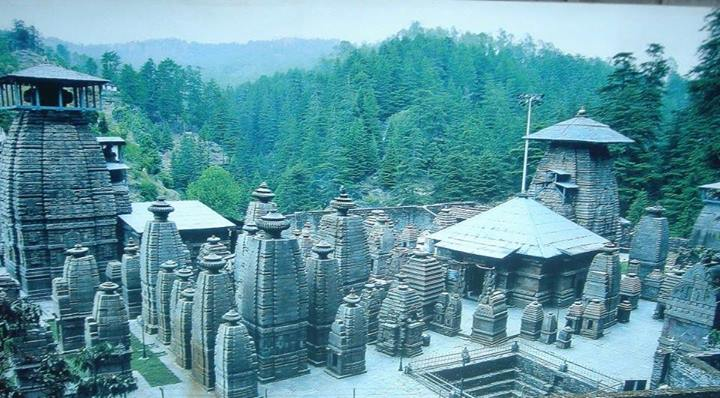Shri Jageshwar Dham is a Hindu temple complex located in Almora, Uttarakhand, India. The temple is dedicated to Lord Shiva and is one of the most important pilgrimage sites for Shaivites in North India. The complex contains over 124 temples, some of which date back to the 9th century AD. The main temple, called Jageshwar Mahadev, is a large and impressive structure with intricate carvings and sculptures. The temple is surrounded by natural beauty, including a cedar forest, and is considered to be a place of great spiritual significance. Visitors can also explore the nearby archaeological museum, which contains artifacts and inscriptions related to the history of the area. The temple is open year-round, but the best time to visit is during the annual Jageshwar Mela, which is held in August/September and features religious ceremonies and cultural performances.
How To Reach ?
There are several ways to reach Shri Jageshwar Dham in
Almora, Uttarakhand, India:
- By Air: The nearest airport is Pantnagar Airport, which is about 120 km from Almora. From there, you can take a taxi or bus to reach the temple complex.
- By Train: The nearest railway station is Kathgodam Railway Station, which is about 120 km from Almora. From there, you can take a taxi or bus to reach the temple complex.
- By Bus: There are regular bus services from major cities in Uttarakhand to Almora. From Almora, you can take a taxi or local bus to reach the temple complex.
- By Car: You can also drive to Shri Jageshwar Dham. The temple is well connected by road and is about 7 km from Almora.
It is recommended to check with local authorities for the
most updated information and also check the road conditions before planning the
trip as some routes may be closed due to bad weather or other reasons.
Best Time to Visit ?
The best time to visit Shri Jageshwar Dham in Almora, Uttarakhand, India is from April to June, and September to November. During these months, the weather is pleasant, making it ideal for sightseeing and exploring the temple complex.
The summer months (April-June) are good for those who want to avoid the monsoon and enjoy the clear weather. While September-November are considered the best time to visit as the weather is cool and comfortable and also the festival of Jageshwar Mela happens in this time, which is an annual event of great significance and showcase the rich cultural heritage of the region.
It is not recommended to visit the temple complex during the
monsoon months (July-August) as the area is prone to landslides and heavy rains
which can make it difficult to reach the temple and also can cause
inconvenience to visit.
Pooja Offered
Shri Jageshwar Dham is a temple complex dedicated to Lord
Shiva, and various poojas (rituals or ceremonies) are offered to the deity.
Some of the common poojas offered at the temple include:
- Abhishekam: This is a ritual in which milk, honey, yogurt, and other items are poured over the idol of Lord Shiva as an offering.
- Aarti: This is a ritual in which a lamp or diya is lit and offered to the deity, along with songs and prayers.
- Haldi-Kumkum: This is a ritual in which turmeric and vermilion powder are applied to the idol of Lord Shiva.
- Rudrabhishekam: This is a special pooja that is performed to appease Lord Shiva and to remove obstacles and difficulties.
- Panchamrita Abhishekam: This is a special pooja where the idol of Lord Shiva is bathed with a mixture of milk, curd, honey, ghee, and sugar.
- Jageshwar Mela: The annual Jageshwar Mela is an event of great significance, and during this time, various poojas and rituals are performed to Lord Shiva, along with cultural performances and religious ceremonies.
It is always recommended to check with the temple
authorities for the most updated information and also to follow the guidelines
given by them while performing the pooja.
Priests Contact
- Pandit Ramesh Chandra Bhatt (Priest -Shri Jageshwar Jyotirling) WhatsApp -+91 -8126462886



Comments
Post a Comment